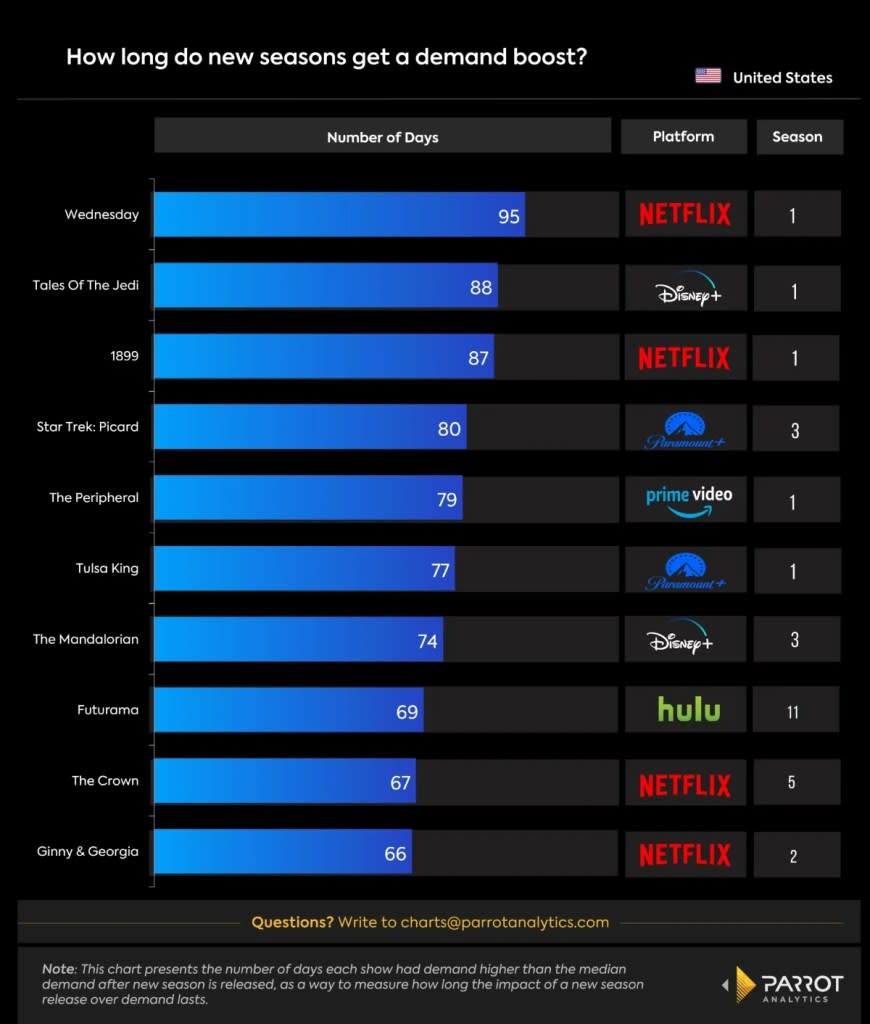The Binge Model is Losing Out to Week-to-Week Streaming Releases for Sustaining Longer Interest | Charts
The binge-release strategy, once a groundbreaking alternative to the traditional episodic airing approach, has revealed its limitations over the years. While it caters to viewers craving immediate access to entire seasons, promoting deep and immersive engagement, it also introduces unique challenges.
Although Netflix championed this strategy for years, its dominance in streaming releases has waned. In fact, Netflix itself has shifted gears. For instance, new seasons of hit shows like “The Witcher,” “Stranger Things” and “Ozark” now adopt a two-part release schedule.
A significant downside of binge-releasing is the reduced cultural longevity of the series. Traditionally, TV series released episodically would fuel discussions for months, ensuring their sustained cultural relevance. By contrast, binge-releasing often compresses these discussions into a brief window.
Analyzing Parrot Analytics’ data highlights the effect of different release methods on show demand during initial weeks. Generally, demand surges after a new episode and gradually wanes. For instance, in 2023, Netflix’s “The Night Agent” experienced about 34 days of elevated demand before stabilizing to a new consistent level over the next few weeks.
Disney+’s episodically released “Secret Invasion” saw recurrent demand spikes with each episode, resulting in about 56 days of heightened demand. Despite similar peak demands, “Secret Invasion” sustained its momentum longer.

That said, some binge-released shows have bucked the trend, sustaining interest for extended periods. For instance, Netflix’s “Wednesday” and “1899,” and Disney+’s “Tales Of The Jedi” maintained high demand for nearly three months post-release.
Comparatively, episodically-released shows like Prime Video’s “The Peripheral,” Paramount+’s “Tulsa King,” and Disney+’s “The Mandalorian” Season 3 have also kept audiences hooked for lengthy durations.
Examining major streaming releases over the past year reveals binge-released shows averaged 52 days of high demand, while episodically released ones averaged 68 days. Thus, while some binge-released series do sustain long-term interest, episodic releases have proven more consistently effective in this regard.

Daniel Quinaud is a senior data analyst at Parrot Analytics, a WrapPRO partner. For more from Parrot Analytics, visit the Data and Analysis Hub.
The post The Binge Model is Losing Out to Week-to-Week Streaming Releases for Sustaining Longer Interest | Charts appeared first on TheWrap.


